Too harsh on rafa? - Because that's the way football is going
43 posts
• Page 3 of 3 • 1, 2, 3
It's a good thread this for boring feckers like me, but Sabes I used to love the sweeper system when you had someone top class playing there. Beckenbauer was fantastic at it, not just in clearing up but when he stepped up from the back. A wonderful player he was, and an Alonso or a Gerrard could definately play there now I reckon. It'll all fashion at the end of the day, like so much in football and life.
"se e in una bottigla ed e bianco, e latte".
-

bigmick - >> LFC Elite Member <<
- Posts: 12166
- Joined: Fri Sep 10, 2004 3:19 pm
- Location: Wimbledon, London.
bavlondon wrote:bigmick wrote:bavlondon wrote:Just to mention Germany played the same system..... they didn't look dull in the slightest. I suppose it comes down to the qualities of the players involved and how you approach it.
There's nothing wrong with any "system" in football, it all depends on the players who play in it. two defensive midfielders isn't the way I interpreted Germany playing FWIW, but it doesn't matter.
Whichever way you looked at it and whichever system anybody thought we were playing last season, I can't get away from my absolute certainty that the Lucas/Masherano axis was a disaster. Now if you played with defensive midfielders and it was Gerrard/Alonso, or Alonso/Sissoko then obviously it looks ery different, as would Gerrard/Masherano.
We lost 19 matches last season, and there must be a reason for it. You can't be unlucky 19 times, there was a reason why we were rubbish. My feeling is that it doesn't really matter as much how you set up, as to who you actually put in each slot. If for instance we had played with 1 holder and pushed Lucas on, it would probably have been better (it could hardly have been any worse lets be honest).
Well fwif Germany do play with 2 holding midfielders. Schweinsteiger is the more offensive of the and Khedira tends to stay back more.
It's all about having 1 more conservative player to break up play and 1 deep lying playmaker.
This was their formation for most of the game against Argentina.
Spain are another team who play with this sort of formation but for them you can even argue there are not really many teams they need to play 2 DM's against but hey they won so who cares.
Lucas and Masch don't work because 1) Mash is only really good at breaking up play and that's it and 2) Lucas is a fish out of water no matter where he plays. At the end of the day no matter how organised you are if the personel are not right for the job then cracks will start to show.
Also just to add in 2006 three of the four semi-finalists (Spain, Germany and the Netherlands) played in a 4-2-3-1.
Bav, surely you arent suggesting that Schweinsteiger is a holding midfielder ?
He is a proper box to box midfielder.
I agree with most, its not the system we played last season, its the players that were in the positions.
The system was great the year before when we had Alonso and Torres.
But swap them for Lucas and Ngog then that creates a major problem.
Sabre looks like a big lezzer
-

Ben Patrick - Posts: 3933
- Joined: Mon Jul 13, 2009 5:47 pm
- Location: Liverpool
neil wrote:Tim LFC wrote:The league is completely different from the league.
now I'm afraid I'm going to have to take issue here. How so? surely its very similar?

Football is a relatively simple game and Roy knows it 

-
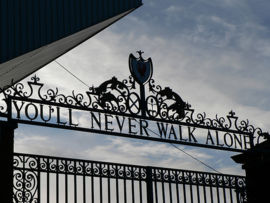
In and Out - LFC Super Member
- Posts: 839
- Joined: Wed Jun 09, 2010 11:49 pm
- Location: Ireland
Sabre wrote:The defence is usually too easily split as they find it difficult to cover the full width of the pitch.
I'm not a fan of systems with 3 in the back but I don't agree that (but I'm not sure if I understand you correctly so correct me if I'm wrong mate)
When a keeper receives and wants to play in short you'll see how the CB precisely split to the positions of LB or RB to give him an option of starting the play and try to make more uneffective the pressing of the opposition.
When you have the ball there's not really a problem of being able to cover all the width. The problem with that system IMHO when you have the ball is that if all your 3 CB are cráp with the ball or nervous, you can't expect to watch your team with any fluidity.
When you haven't the ball it's about packing all the lines together, and the full backs are expected to be occupying that back line ASAP, so it's not a problem about width there neither.
I think we have used twice or thrice a system with 3 in the back, and it's a decent option (not my fav) provided you have the right men for that. With a man like Agger you can afford that, but with the wing men we have, we don't, IMHO.
Hmmm.

The problem is in the fact there's a transition between getting forward and assuming a defensive position and with three - transitioning to five at the back - I think this leaves more opportunity to get in behind the wing backs and it stretches the midfield at the same time. Even once the wing backs have completed that transition, there's another transition that needs to be made and that's in midfield. With the full backs now back in position making a five at the back, you're spread more thinly across the midfield and this means the extra man up top has to drop back in and quick and they have to make a four, in order to cover the width of the middle of the pitch (otherwise the defence is more exposed); both of these transitions add complexity that needn't be there, IMO. I'm not going purely on theory here, either. It probably isn't the best example I know but I watched Newcastle at White Hart Line two seasons ago and you could cleary see the problems with it. There simply is more space to exploit because it's difficult to strike the right balance when transitioning from attack to defence. I do remember us using it against Portsmouth in 08/09 and you could see the troubles there and the benefits, too, mind. Put simply, threes are spread more thinly than fours.
-

LFC2007 - Posts: 7706
- Joined: Sat Apr 28, 2007 9:21 pm
- Location: London
LFC2007 wrote:Sabre wrote:The defence is usually too easily split as they find it difficult to cover the full width of the pitch.
I'm not a fan of systems with 3 in the back but I don't agree that (but I'm not sure if I understand you correctly so correct me if I'm wrong mate)
When a keeper receives and wants to play in short you'll see how the CB precisely split to the positions of LB or RB to give him an option of starting the play and try to make more uneffective the pressing of the opposition.
When you have the ball there's not really a problem of being able to cover all the width. The problem with that system IMHO when you have the ball is that if all your 3 CB are cráp with the ball or nervous, you can't expect to watch your team with any fluidity.
When you haven't the ball it's about packing all the lines together, and the full backs are expected to be occupying that back line ASAP, so it's not a problem about width there neither.
I think we have used twice or thrice a system with 3 in the back, and it's a decent option (not my fav) provided you have the right men for that. With a man like Agger you can afford that, but with the wing men we have, we don't, IMHO.
Hmmm.
The problem is in the fact there's a transition between getting forward and assuming a defensive position and with three - transitioning to five at the back - I think this leaves more opportunity to get in behind the wing backs and it stretches the midfield at the same time. Even once the wing backs have completed that transition, there's another transition that needs to be made and that's in midfield. With the full backs now back in position making a five at the back, you're spread more thinly across the midfield and this means the extra man up top has to drop back in and quick and they have to make a four, in order to cover the width of the middle of the pitch (otherwise the defence is more exposed); both of these transitions add complexity that needn't be there, IMO. I'm not going purely on theory here, either. It probably isn't the best example I know but I watched Newcastle at White Hart Line two seasons ago and you could cleary see the problems with it. There simply is more space to exploit because it's difficult to strike the right balance when transitioning from attack to defence. I do remember us using it against Portsmouth in 08/09 and you could see the troubles there and the benefits, too, mind. Put simply, threes are spread more thinly than fours.
I think thats why its important to have wide CBs who are happy to go in to fullback possitions when needed and as you have already said a DM who is comfortable dropping in when needed to make a four.
Its all about the players really and while I agree with your points I think IF you have the right players it can be a very affective way to line up.
That said its no use switching to it once in a blue moon and expecting cohesion.
Dont judge a book by the cover, unless you cover just another, because blind exceptance is a sign,
Of stupid fools who stand in line...... Like..
Of stupid fools who stand in line...... Like..
-
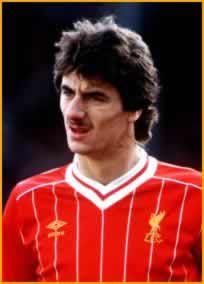
Rush Job - >> LFC Elite Member <<
- Posts: 2367
- Joined: Thu Oct 26, 2006 2:38 am
It boils down to whether the extra width you get through the wing backs is worth more than the risk associated with adapting to the system defensively (the transitions you have to make in order not to be overly exposed). I'd say that on the whole it isn't, bar say against sh!te teams. Not that it can't work - it has in other eras - but I think it's out of favour for good reason. The pace at which the game is played now I think means you need more certainty about your shape and where you need to be and when - else you'll get caught out, compared with years gone by when the game moved at a slower pace.
-

LFC2007 - Posts: 7706
- Joined: Sat Apr 28, 2007 9:21 pm
- Location: London
LFC2007 wrote:It boils down to whether the extra width you get through the wing backs is worth more than the risk associated with adapting to the system defensively (the transitions you have to make in order not to be overly exposed). I'd say that on the whole it isn't, bar say against sh!te teams. Not that it can't work - it has in other eras - but I think it's out of favour for good reason. The pace at which the game is played now I think means you need more certainty about your shape and where you need to be and when - else you'll get caught out, compared with years gone by when the game moved at a slower pace.
Well here is Roy's take on the 3-5-2. Don't think it's one we'll be using all that often although if you listen to what he says about the way Venables employed it with England, we might just see it with Carra on the right of the 3 and Agger on the left.
http://www.uefa.com/trainin....ay=true
-

Scottbot - >> LFC Elite Member <<
- Posts: 4919
- Joined: Thu Jan 22, 2004 8:02 pm
- Location: Winchester, Hampshire
If only we had had PACY wingers (or right forwards) who can dribble with ball, put in a decent cross and were a genuine goal threat.
Now compare muller and podolski with the wingers who played for us
Now compare muller and podolski with the wingers who played for us

Last edited by The_Rock on Thu Jul 15, 2010 5:05 pm, edited 1 time in total.
A Genius Billionaire Playboy Philanthropist
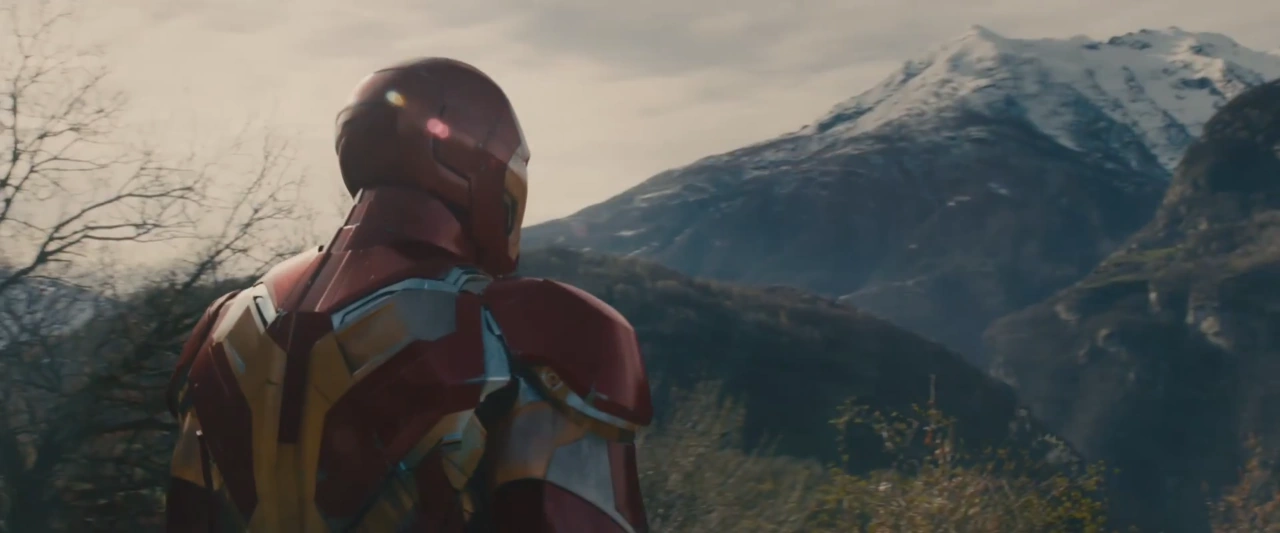

-
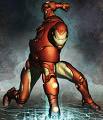
The_Rock - >> LFC Elite Member <<
- Posts: 6315
- Joined: Sat Oct 11, 2003 2:30 pm
- Location: Michigan, Toronto and Singapore...take your pick
The_Rock wrote:Now compare muller and podolski with the wingers who played for us
Ok, our winger Kuyt reached the final where as Podolski and Müller did not.


SOS member #1499
Drummerphil, never forgotten.
-
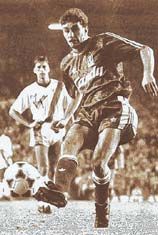
Sabre - >> LFC Elite Member <<
- Posts: 13178
- Joined: Mon Oct 18, 2004 12:10 am
- Location: San Sebastian (Spain)
Sabre wrote:The_Rock wrote:Now compare muller and podolski with the wingers who played for us
Ok, our winger Kuyt reached the final where as Podolski and Müller did not.
It also overlooks the fact that we didn't get bodies in the box, if you don't pick out Torres with a cross - if he is fit and playing - then you'd be zooming past the full back and crossing to the keeper or CBs as there wouldn't be a red shirt in sight.
Of course Kuyt put in crosses in the World Cup, and the Premiership last season, but let's all be fixated with pace over rather than other qualities. I guess nothing should stand in the way of finding a way to slate slate Kuyt

Oh and how many of the german goals actually came from crosses? 1st against Germany was a free-kick, second and third were defensive missed tackles in the box and one of those was a pull-back rather than a cross.
Against England it was a long ball down the middle for the first, was passed diagonally into the right back position for the second and fair enough the third was a cross because there was no full back to beat - Johnson was still bombing back from the wing.
Can't remember the goals from the aussie game which was the other big scoring game for the germans, but it was shocking defending that let the germans score most of their goals, not outstanding wing play
Last edited by Owzat on Fri Jul 16, 2010 7:07 am, edited 1 time in total.
Never buy from PC World, product quality is poor and their 'customer service' is even poorer
-

Owzat - >> LFC Elite Member <<
- Posts: 7487
- Joined: Wed Nov 12, 2003 8:55 am
- Location: England
The Question: What next for 4-4-2?
British football's favourite formation isn't dead – but the World Cup proved the future of 4-4-2 looks bleak
This was a bad World Cup for a lot of old favourites – anybody who appeared on the Nike ad, Marcello Lippi, preconceptions about Africa – but none of them had quite such a miserable tournament as 4-4-2. When even its old friend Michael Owen starts doubting it, the future for the formation that has ruled British football for 40 years looks bleak.
Johan Cruyff got stuck in as well last week – not particularly surprisingly given his lifelong ideological insistence on 4-3-3 – pointing out that "the numbers don't match up" and explaining that a system of three straight bands doesn't lend itself to the creation of passing triangles. This has always been an axiom: all else being equal, a triangle will always beat a line, and the Cruyff mode of play has always been predicated on the creation of triangles. A 4-2-3-1, with its W shape in midfield, is essentially comprised of interlocking triangles.
Which raises the question of why, if 4-4-2's disadvantages are so obvious, it has survived for so long? To start with, it should be made clear that Cruyff is speaking about his particular vision of football, which is rooted in ball possession and pressing, something that caused him, even before the game, to align himself with Spain rather than Holland in the World Cup final. That is one way to play – and the recent success of Barcelona and Spain shows it is a successful way to play – but it certainly isn't the only way. That a short-passing, technique-based game isn't for everybody was demonstrated very clearly in a tournament in which many people preferred the more dynamic, if more reactive, football of Germany.
Those passing triangles are only important for a side looking to dominate possession. For a side looking to disrupt that, 4-4-2 can be extremely effective – the famous "two banks of four" that for a long time seemed to be such a feature of any English team playing an away game in European competition. Fulham showed last season how effective the style can still be. Sit the midfield line deep on the back four so there is minimal space between the lines for attacking midfielders or deep-lying forwards to exploit, and it becomes very hard to penetrate. It doesn't matter how many triangles you create if you never get the ball closer than 35 yards from the opposition goal.
Think of Gérard Houllier's Liverpool away to Roma in the Uefa Cup in 2001, with Owen and Robbie Fowler left high upfield, often 50 yards and more from the midfield: keep it tight, make sure of the clean sheet, and if, as in that case, Owen can pilfer two goals, that's a bonus. Think of Fulham in the Europa League semi-final against Hamburg.
Slovenia's method both in qualifying and at this World Cup, although slightly more possession-based, wasn't dissimilar, particularly after Zlatan Ljubijankic had replaced Zlatko Dedic. Ljubijankic is a more technical player and a better finisher than Dedic, but he doesn't drop off and doesn't forage which, at least against England – a game in which Slovenia played with such trepidation you wondered if anybody had told them Stan Mortensen and Tom Finney had retired – left Valter Birsa's occasional forays on the right as the only bridge between midfield and attack.
Sacchi's squeeze and the modern stretch
So 4-4-2 has a future as a reactive formation, yet it was also the preferred formation of Arrigo Sacchi, probably the most proactive coach of all. It was the system's defensive attributes, though, that made it work for him. The great strength of the Milan of the late 80s was its pressing, with Sacchi demanding an ideal of 25 metres from centre-forward to centre-back when his side were out of possession. They squeezed high up the pitch, and so 4-4-2 made sense because a four-man midfield meant each member of the back four was protected by a midfielder and so was less likely to be isolated (which, with acres of space behind him, was a real concern).
Possession was less of a concern for Sacchi. I recently watched Milan's 5-0 victory over Real Madrid in the second leg of the semi-final of the 1989 European Cup, and was struck by how often (comparatively speaking) they gave the ball away. Madrid, for long periods, looked the better side on the ball, but were undone by the dynamism of Sacchi's side (although 5-0 was still a freakish scoreline). It's probably the case that, as Egil Olsen posited in a more pragmatic context, a team have to choose between prioritising possession and position on the field.
Pressing is still part of the game, and Barcelona and Spain both perform the high press excellently, but it has been made harder to execute because of the liberalisation of the offside law. The effective playing area has been stretched, and as a result, three-band systems have increasingly been replaced by four-band systems.
Perhaps it is just about conceivable that, if players could be persuaded to put their egos to one side (and that could be an issue for Roy Hodgson if he attempts to apply the Fulham system at Liverpool this season), a club team could still be drilled into an effective pressing 4-4-2, but achieving that level of discipline is an exhausting, demoralisingly boring process that became too much even for Milan after three seasons; it was very hard to implement then, with the change in the offside law and players enjoying greater freedom to change clubs it is even harder now. At international level, anyway, where the time available to work with players is limited and they are fatigued by club commitments, it is impossible, something even Sacchi was forced to acknowledge.
4-4-2 isn't dead
What the World Cup has done is to expose the problems 4-4-2 without hard pressing faces, and not just in terms of being outnumbered in midfield; with the stretching of the effective playing area, the midfield band can become exposed, with space in front of it and space behind it. That gap between defensive and midfield lines was precisely the space Mesut Ozil exploited so well in the first half of Germany's victory over England (this space, as Matthias Sindelar, Alfred Bickel, Laszlo Kubala, Nandor Hidegkuti, Pelé, Günter Netzer,Diego Maradona, Ruud Gullit, Zinedine Zidane, Rui Costa and Juan Román Riquelme and countless others have demonstrated, has always been a problem for England, and that weakness is one of the reasons Eric Cantona, Dennis Bergkamp and Gianfranco Zola were so successful in the Premier League in the 90s). Quite apart from the furious search for immediate justice that followed the non-award of a goal after Frank Lampard's shot had crossed the line, it may be that a desire to compress that area was partly behind England's suicidally high line in the second half of that game.
And yet when the Premier League begins again next month, probably around half the sides will be playing 4-4-2, and not all as a stifling tactic. That is not because of a lack of tactical sophistication, or at least not just because of a lack of tactical sophistication: 4-4-2, to those brought up in Britain, is the default; it's what every player is brought up to understand. A five-man midfield, however it is arrayed, brings its own problems, perhaps most obviously that it can be difficult, particularly for less technical teams, to get men forward to support the lone striker.
Below the very highest level, it may be that it is better simply to let players do what comes naturally. Then there is the issue of personnel, particularly at clubs with a relatively limited budget. At Sunderland, for instance, Steve Bruce may like the idea of 4-2-3-1, but when he has Kenwyne Jones and Darren Bent forming a potent partnership, it makes little sense to disrupt it, even if the corollary is that he occasionally loses control of midfield. Sunderland's form last season notably improved when Steed Malbranque moved to the left and began cutting infield, effectively giving Sunderland an auxiliary central midfielder and bringing them greater control in the centre.
So 4-4-2 isn't dead, but the World Cup confirmed that the trend of the past decade at the highest level is against it.
British football's favourite formation isn't dead – but the World Cup proved the future of 4-4-2 looks bleak
This was a bad World Cup for a lot of old favourites – anybody who appeared on the Nike ad, Marcello Lippi, preconceptions about Africa – but none of them had quite such a miserable tournament as 4-4-2. When even its old friend Michael Owen starts doubting it, the future for the formation that has ruled British football for 40 years looks bleak.
Johan Cruyff got stuck in as well last week – not particularly surprisingly given his lifelong ideological insistence on 4-3-3 – pointing out that "the numbers don't match up" and explaining that a system of three straight bands doesn't lend itself to the creation of passing triangles. This has always been an axiom: all else being equal, a triangle will always beat a line, and the Cruyff mode of play has always been predicated on the creation of triangles. A 4-2-3-1, with its W shape in midfield, is essentially comprised of interlocking triangles.
Which raises the question of why, if 4-4-2's disadvantages are so obvious, it has survived for so long? To start with, it should be made clear that Cruyff is speaking about his particular vision of football, which is rooted in ball possession and pressing, something that caused him, even before the game, to align himself with Spain rather than Holland in the World Cup final. That is one way to play – and the recent success of Barcelona and Spain shows it is a successful way to play – but it certainly isn't the only way. That a short-passing, technique-based game isn't for everybody was demonstrated very clearly in a tournament in which many people preferred the more dynamic, if more reactive, football of Germany.
Those passing triangles are only important for a side looking to dominate possession. For a side looking to disrupt that, 4-4-2 can be extremely effective – the famous "two banks of four" that for a long time seemed to be such a feature of any English team playing an away game in European competition. Fulham showed last season how effective the style can still be. Sit the midfield line deep on the back four so there is minimal space between the lines for attacking midfielders or deep-lying forwards to exploit, and it becomes very hard to penetrate. It doesn't matter how many triangles you create if you never get the ball closer than 35 yards from the opposition goal.
Think of Gérard Houllier's Liverpool away to Roma in the Uefa Cup in 2001, with Owen and Robbie Fowler left high upfield, often 50 yards and more from the midfield: keep it tight, make sure of the clean sheet, and if, as in that case, Owen can pilfer two goals, that's a bonus. Think of Fulham in the Europa League semi-final against Hamburg.
Slovenia's method both in qualifying and at this World Cup, although slightly more possession-based, wasn't dissimilar, particularly after Zlatan Ljubijankic had replaced Zlatko Dedic. Ljubijankic is a more technical player and a better finisher than Dedic, but he doesn't drop off and doesn't forage which, at least against England – a game in which Slovenia played with such trepidation you wondered if anybody had told them Stan Mortensen and Tom Finney had retired – left Valter Birsa's occasional forays on the right as the only bridge between midfield and attack.
Sacchi's squeeze and the modern stretch
So 4-4-2 has a future as a reactive formation, yet it was also the preferred formation of Arrigo Sacchi, probably the most proactive coach of all. It was the system's defensive attributes, though, that made it work for him. The great strength of the Milan of the late 80s was its pressing, with Sacchi demanding an ideal of 25 metres from centre-forward to centre-back when his side were out of possession. They squeezed high up the pitch, and so 4-4-2 made sense because a four-man midfield meant each member of the back four was protected by a midfielder and so was less likely to be isolated (which, with acres of space behind him, was a real concern).
Possession was less of a concern for Sacchi. I recently watched Milan's 5-0 victory over Real Madrid in the second leg of the semi-final of the 1989 European Cup, and was struck by how often (comparatively speaking) they gave the ball away. Madrid, for long periods, looked the better side on the ball, but were undone by the dynamism of Sacchi's side (although 5-0 was still a freakish scoreline). It's probably the case that, as Egil Olsen posited in a more pragmatic context, a team have to choose between prioritising possession and position on the field.
Pressing is still part of the game, and Barcelona and Spain both perform the high press excellently, but it has been made harder to execute because of the liberalisation of the offside law. The effective playing area has been stretched, and as a result, three-band systems have increasingly been replaced by four-band systems.
Perhaps it is just about conceivable that, if players could be persuaded to put their egos to one side (and that could be an issue for Roy Hodgson if he attempts to apply the Fulham system at Liverpool this season), a club team could still be drilled into an effective pressing 4-4-2, but achieving that level of discipline is an exhausting, demoralisingly boring process that became too much even for Milan after three seasons; it was very hard to implement then, with the change in the offside law and players enjoying greater freedom to change clubs it is even harder now. At international level, anyway, where the time available to work with players is limited and they are fatigued by club commitments, it is impossible, something even Sacchi was forced to acknowledge.
4-4-2 isn't dead
What the World Cup has done is to expose the problems 4-4-2 without hard pressing faces, and not just in terms of being outnumbered in midfield; with the stretching of the effective playing area, the midfield band can become exposed, with space in front of it and space behind it. That gap between defensive and midfield lines was precisely the space Mesut Ozil exploited so well in the first half of Germany's victory over England (this space, as Matthias Sindelar, Alfred Bickel, Laszlo Kubala, Nandor Hidegkuti, Pelé, Günter Netzer,Diego Maradona, Ruud Gullit, Zinedine Zidane, Rui Costa and Juan Román Riquelme and countless others have demonstrated, has always been a problem for England, and that weakness is one of the reasons Eric Cantona, Dennis Bergkamp and Gianfranco Zola were so successful in the Premier League in the 90s). Quite apart from the furious search for immediate justice that followed the non-award of a goal after Frank Lampard's shot had crossed the line, it may be that a desire to compress that area was partly behind England's suicidally high line in the second half of that game.
And yet when the Premier League begins again next month, probably around half the sides will be playing 4-4-2, and not all as a stifling tactic. That is not because of a lack of tactical sophistication, or at least not just because of a lack of tactical sophistication: 4-4-2, to those brought up in Britain, is the default; it's what every player is brought up to understand. A five-man midfield, however it is arrayed, brings its own problems, perhaps most obviously that it can be difficult, particularly for less technical teams, to get men forward to support the lone striker.
Below the very highest level, it may be that it is better simply to let players do what comes naturally. Then there is the issue of personnel, particularly at clubs with a relatively limited budget. At Sunderland, for instance, Steve Bruce may like the idea of 4-2-3-1, but when he has Kenwyne Jones and Darren Bent forming a potent partnership, it makes little sense to disrupt it, even if the corollary is that he occasionally loses control of midfield. Sunderland's form last season notably improved when Steed Malbranque moved to the left and began cutting infield, effectively giving Sunderland an auxiliary central midfielder and bringing them greater control in the centre.
So 4-4-2 isn't dead, but the World Cup confirmed that the trend of the past decade at the highest level is against it.
- Benny The Noon
43 posts
• Page 3 of 3 • 1, 2, 3
Return to Liverpool FC - General Discussion
-
- Related topics
- Replies
- Views
- Last post
-
- Very harsh!
1, 2, 3, 4by Stan Laurel » Wed Dec 15, 2004 8:54 pm - 46 Replies
- 3280 Views
- Last post by zarababe

Thu Dec 16, 2004 3:59 pm
- Very harsh!
-
- Rafa - football maniac - Its offical...
by Feeney » Thu Aug 24, 2006 9:03 pm - 6 Replies
- 1596 Views
- Last post by luvliverpool

Sun Aug 27, 2006 9:40 pm
- Rafa - football maniac - Its offical...
-
- Rafa's thoughts on reserve team football
1, 2, 3by puroresu » Tue Mar 20, 2007 5:23 pm - 30 Replies
- 3641 Views
- Last post by The Manhattan Project

Sun Apr 01, 2007 11:42 am
- Rafa's thoughts on reserve team football
-
- Rafa: attacking football this season! - From the mirror
by Paul C » Sun Jul 15, 2007 11:42 am - 10 Replies
- 1979 Views
- Last post by 66-1112520797

Mon Jul 16, 2007 8:47 am
- Rafa: attacking football this season! - From the mirror
-
- Rafa view from racing post - Pullien on football
by dawson99 » Mon Feb 27, 2006 2:35 pm - 2 Replies
- 983 Views
- Last post by bigmick

Mon Feb 27, 2006 6:09 pm
- Rafa view from racing post - Pullien on football
Who is online
Users browsing this forum: Bing [Bot] and 43 guests
-
- Advertisement


